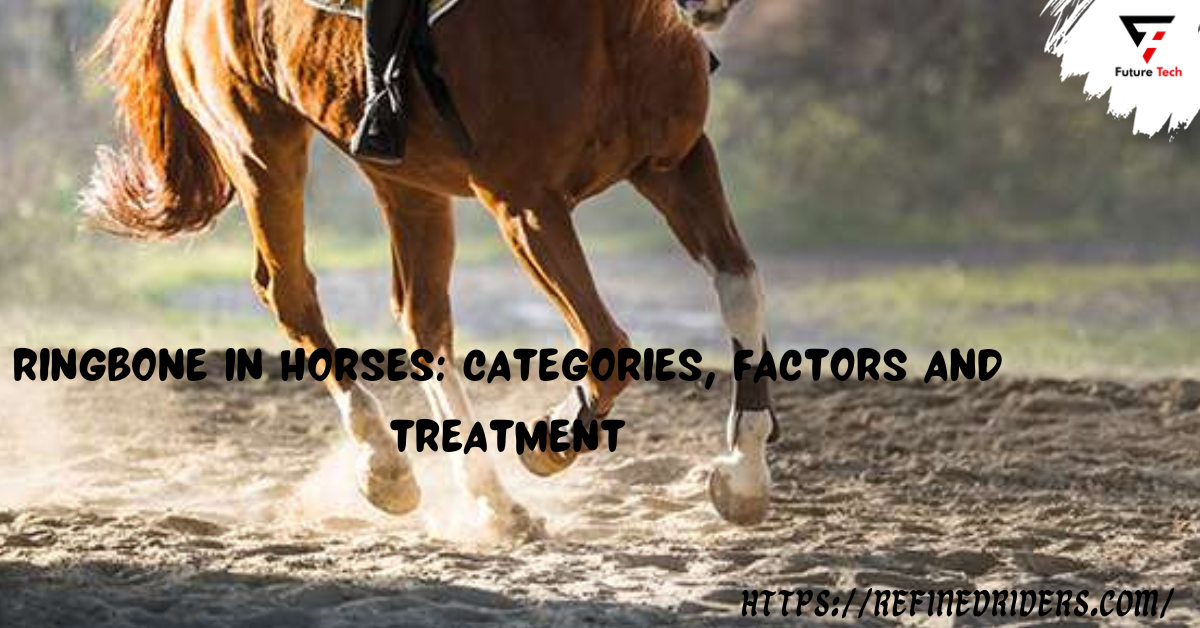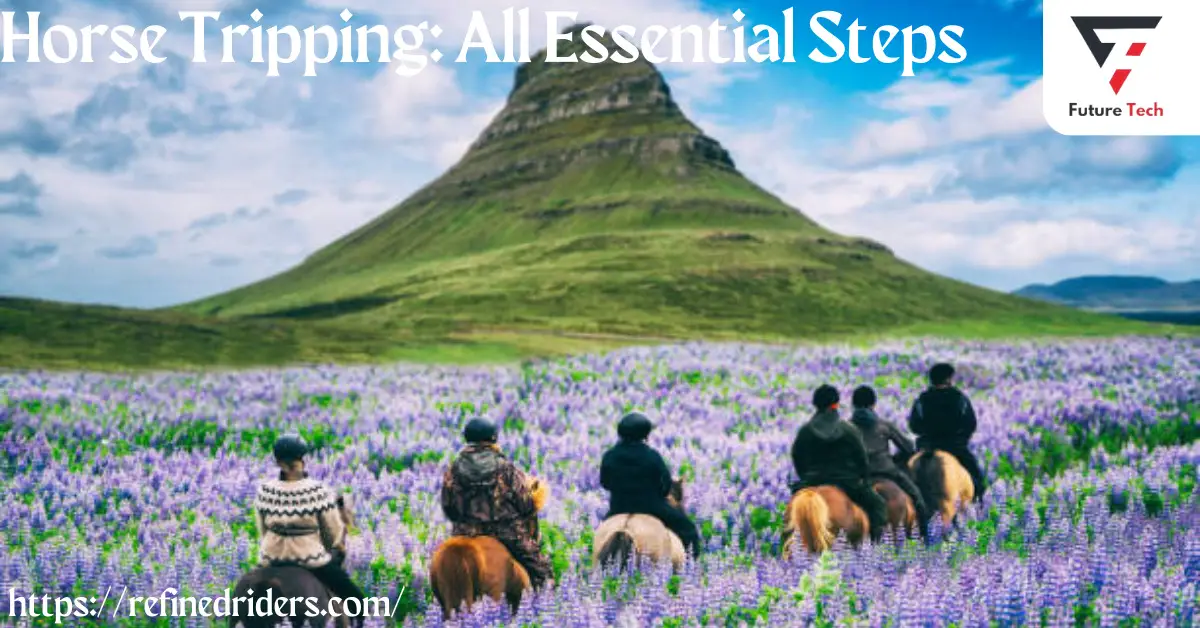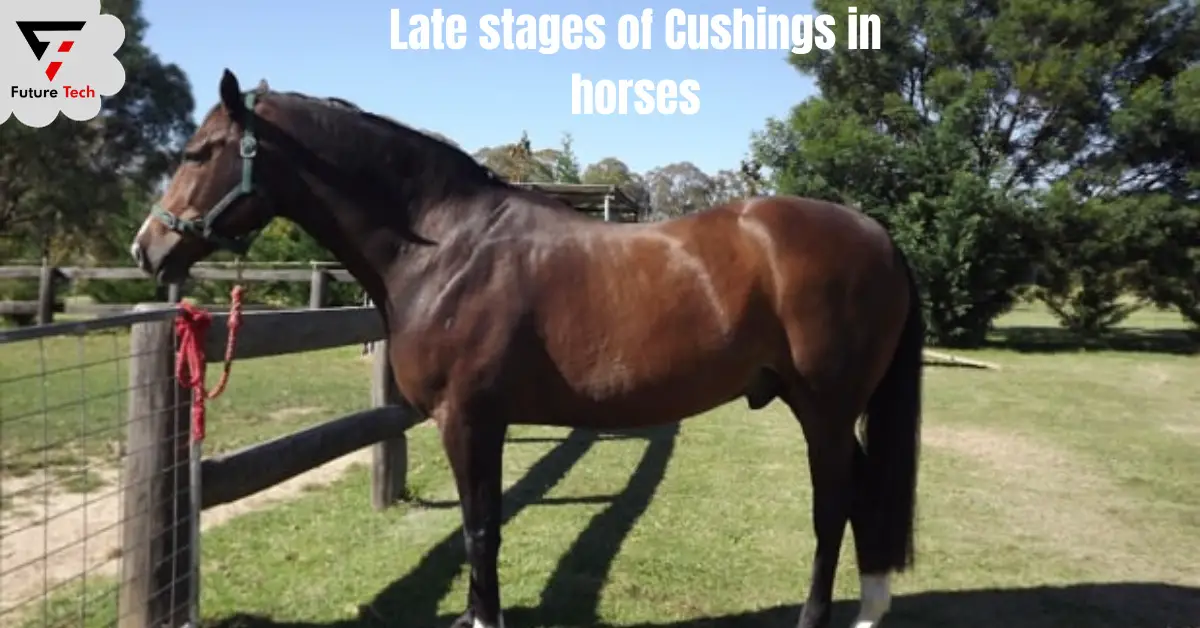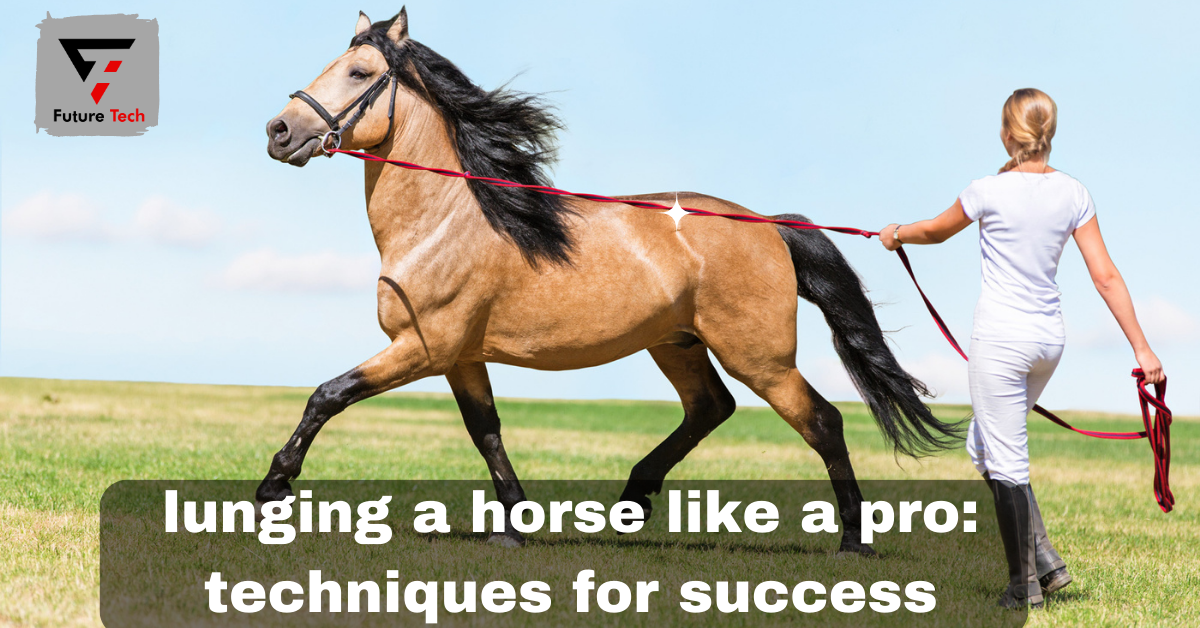Horses with ringbone may have lower limb degenerative disease, which results in inflammation and the formation of bony growths around afflicted joints. Lameness, stiffness, and swelling of the pastern joints are common symptoms. Although appropriate care and therapy may halt the condition’s growth, it will worsen. Joint instability, trauma, repeated stress, and conformation are some factors that affect the development of ringtones.
Although it may affect horses of any age or breed, older horses are likelier to have ringbone. Good care and routine observation are necessary for a horse to be comfortable and sound. Getting advice from a skilled farrier and veterinarian might help create a thorough treatment program. A horse may live for years with a ringbone diagnosis, but early recognition and cooperation may prevent it from being fatal or ending its career. Horses that work hard their whole lives are prone to ringbone, but simple preventative measures and ongoing observation of symptoms may help them stay sound.
The reason behind Ringbone
Ringbone develops from progressive bony proliferation that builds up on the pastern and coffin joints. Similar to other forms of arthritis, symptoms usually start to show up around middle age for horses. Depending on conformation and use, certain horses are more prone to this ailment than others. This arthritis is joint in horses with toed-in conformation or erect pasterns. Ringbone is also more common in horses who experience recurrent stress in the pastern area, such as barrel horses, polo ponies, and jumpers. Lastly, an acute trauma to the pastern area may also put a horse at risk for bone growth there.
Categories of Bone
‘High Ringbone’ in horses
The high Ringbone represents where the long and short pastern bones converge. A ring, or partial ring, forms around the pastern joint when the mineral deposits calcify. Midway down the pastern and forelegs, the High Ringbone often manifests as a little bony ridge and becomes noticeable after the process has progressed for some time. It is likely to be apparent in the early stages of radiography.
The more pronounced the Ringbone is, the closer the calcification is to the joint’s surface and the more painful and ensuing friction between the rubbing bones of the joint gets with each stride. After a while, the joint will often fuse, which naturally stabilizes the region and lessens lameness; the joint itself, however, will no longer be flexible, lowering the horse’s degree of flexibility and mobility.
‘Low Ringbone’ in horses
The calcification process resulting in Low Ringbone is identical to that of High Ringbone, except it occurs at the joints between the coffin and short pastern bone. The coronary band develops a rugged, bony ridge as a result. Since these joints are flexible and necessary for mobility, many people see the Low Ringbone as more severe than the High Ringbone. Similar to horses with high ringbones, horses with low ringbones have a natural reduction in mobility but a significant reduction in discomfort and lameness after the joints have fused after some time.
Ringbone: Articular vs Non-Articular
Furthermore, ringtones may take on different morphologies based on the location of the bony growths inside the joint. This categorization considers whether the bony changes are on the surfaces of the joints or the structures around the joints.
Articular ringbone:
The development of bony growths on the joint’s surface, either in the proximal or distal interphalangeal (DIP) joints, proved what first identified them. Because the bony growth directly impacts the surfaces of the joints, it corresponds with more lameness and joint pain than non-articular ringtones.
The articular ringbone develops when the surrounding ligaments and attachments rip and strain under tension, inflaming the periosteum, the bone’s outer layer. Excessive bone development may result from this disruption of the bone sheath. Horses who are not fast runners, like draught horses, are prone to this ailment. The bones undergo increased stress because of their stocky structure, higher weight, and upright posture.
Non-articular ringbone:
This disorder, sometimes called periarticular ringbone, describes bony growths in the surrounding tissues, tendons, and ligaments outside the joint. High ringbone tends to present with non-articular ringbone, which typically causes moderate to severe lameness.
Signs of Clinical
In horses with ringbones, bony growths may appear as ridges, elevated lumps, or protrusions on the front surface of the lower leg. The following clinical indicators may result from these growths:
- Chronic lameness, ranging from mild to severe
- Abrupt and severe onset of limp
- Ligament or joint edema
- Pain that occurs as the joint flexes
- Reduction in joint motion
The degree of ringbone symptoms in horses might vary depending on the disease stage, the location and size of bony development, and the horse’s pain threshold. Horses often endure sporadic swelling and lameness when the ringbone first appears. Resting enough, however, should help these sensations go away. Lower limb swelling may return if the horse returns to work before the bony growth develops.
Lameness may disappear if bony growths resembling ringtones develop outside of the joint surface. However, if you experience direct injury to the joint, lameness tends to persist and worsen over time.
Danger Factors
A horse’s age, size, and kind of labor may all impact the development of ringtones. Other risk factors include shoeing techniques, conformation of the limbs and feet, and shoeing methods.
Even if the precise origin of ringbone is yet unknown, the following illnesses frequently come with a higher risk of developing ringbone:
Injury:
Infections and stressful events, such as cuts from wire fencing, may result in ringbone. Direct impacts to the limb after a fall or collision may cause significant joint stress and may result in the formation of a ringbone.
Aggravation:
Ringbone growth may result from several factors, including wear and tear on the joints and surrounding cartilage, including strain or stress injuries.
Sport of performance:
Horses who jump and dressage are more likely to develop osteoarthritis in their limb joints. Because Western disciplines entail high-speed training and unexpected pauses, polo ponies and horses involved in these activities are also more likely to acquire ringbone.
Osteochondrosis (OC):
The aberrant growth of the underlying bone and joint cartilage is the hallmark of this orthopedic illness. It may cause joint injury to many body parts and is especially common in young, developing horses. Ringbone development may be a predisposition in horses with OC.
Horses with ringtones diagnosed
Heat and swelling in the Ringbone-associated joint will fluctuate throughout its early stages of development. When a horse is lame, box rest or recovery may help alleviate it momentarily. However, after the horse’s rest time, the inflammation and pain will return due to the increased calcification of the bone growth.
Even if a horse may not have a high ringbone, its owners often see that it is reluctant to move its pastern joint. A farrier typically discovers this condition while the horse flexes its lower limbs. The most accurate tool for diagnosing Ringbone in its very early stages is infrared thermography, which may be useful in identifying inflammation and increased thermal activity along the pastern bones. Still, radiographs with evidence of calcification are usually the first to provide a diagnosis.
A rare situation when radiographs show little calcification in the pastern joint will likely result in a diagnosis of “false Ringbone.” Treatment for this ailment usually consists of a period of box rest with a substantially higher success rate in recovery. However, that is a warning sign that the horse could have arthritis later on.
Treating Ringbone in Horses
Although there are no scientifically established treatments for Ringbone, there are several ways to provide your horse comfort and assistance. Keeping your horse’s weight under control is crucial to lessening the load on its joints, just as with any arthritic condition. Similarly, controlling their activity and ensuring no excessive stress on the joint can aid in lowering pain levels.
Long-term joint supplements and short-term use of anti-inflammatory NSAIDs like Bute or Danilon are common ways to combat inflammation. Most of the time, your horse’s farrier will play a significant part in treating Ringbone.
Applying a rolled-toe shoe and adding a pad or webbed shoe to provide the hoof a little additional protection is the farrier’s most popular method of treating a horse with a sidebone or Ringbone. Some farriers will treat the horse by not clipping the sole itself, instead choosing to let the callus on the sole develop. Veterinarians often advise box rest and restricted joint mobility during the first phase of therapy. Some may advise applying a cast or tightly bandaging the joint to prevent further movement. To assist in lessening the horse’s discomfort, your veterinarian could also recommend intra-articular steroid injections and, in some situations, recommend having the joints artificially fused (a procedure known as arthrodesis).
Prevention
Even while avoiding ringbone is not always feasible. There are steps you may take to reduce your risk or postpone the beginning of injury. It’s critical to recognize that certain elements, like heredity or inadequate conformation, could be uncontrollable. Horses with a lower risk of developing ringbone may benefit from the following management practices:
Proper hoof conformation:
Regular trimming and shoeing are essential to ensure maximum hoof health, good alignment, and balanced hoof angles. Proper farrier care lessens joint stress by distributing stresses uniformly across the hoof.
Frequent conditioning and exercise:
Equines with varying fitness levels should have different training regimens. For joints to function at their best, appropriate conditioning seems necessary. It is feasible to prevent the horse’s joints from experiencing excessive or abrupt stress by gradually increasing its strength and endurance.
Appropriate footing:
Proper footing in turnout areas, arenas, and track surfaces may limit the impact on limbs and lower the risk of joint discomfort. Additionally, good footing lowers the chance of trauma-related ringbone.
Maintaining weight:
Because of the increased stresses placed on their joints and lower limbs. Horses that are obese or overweight are more likely to develop ringbone and degenerative joint disease (DJD). Eating a balanced diet and getting the right amount of exercise are two important ways to keep horses’ bodies healthy.
Ethnic balance:
Due to their detrimental effects on tissue development, nutrient shortages might influence the upkeep of joints. Maintaining a well-balanced diet high in vitamins and minerals is particularly crucial, especially for developing horses, as it supports strong bones, hooves, and connective tissue—all of which are important for joint health.
Conclusion:
In conclusion, horses of different ages and breeds might suffer from the difficult ailment known as ringbone. Its growth frequently coincides with acute trauma, conformation, and repetitive stress. Effective management of this illness requires early detection and cooperation with knowledgeable specialists, such as veterinarians and farriers. Horses with ringtones may find comfort and support in a mix of farrier treatments, weight management, and veterinarian care. However, there is no one-size-fits-all therapy.




